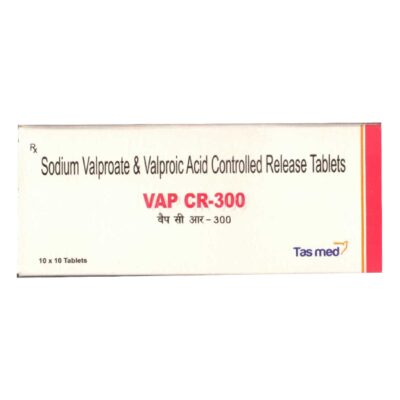🧠⚡💊 Sodium Valproate 200mg + Valproic Acid 87mg Tablet: Broad-Spectrum Seizure Control and Mood Stabilization
The combination of Sodium Valproate 200mg and Valproic Acid 87mg per tablet provides a total valproate content of 287mg, offering a balanced formulation for managing epilepsy, bipolar disorder, and migraine prophylaxis. As a well-established therapy, this dual formulation ensures both immediate and extended release, enhancing seizure control and mood stability across a wide range of patient populations.
🔬 Mechanism of Action
This combination acts synergistically on the central nervous system (CNS) by enhancing the levels and activity of gamma-aminobutyric acid (GABA)—the brain’s primary inhibitory neurotransmitter. Its mechanisms include:
-
Inhibition of GABA degradation
-
Promotion of GABA synthesis
-
Blocking voltage-gated sodium and calcium channels, which stabilizes neuronal membranes and prevents repetitive firing
Together, Sodium Valproate and Valproic Acid work to reduce abnormal brain activity, providing effective relief from various seizure types and stabilizing mood in psychiatric conditions.
📌 Indications and Uses
This combination is used to treat:
-
Epilepsy, including:
-
Generalized tonic-clonic seizures
-
Absence seizures
-
Myoclonic seizures
-
Partial (focal) seizures
-
-
Bipolar disorder:
-
Acute manic episodes
-
Maintenance therapy for mood stabilization
-
-
Migraine prophylaxis
-
Aggression and behavioral disturbances in neurological conditions (off-label)
The 200mg + 87mg strength is ideal for patients requiring moderate doses with consistent therapeutic levels.
💊 Dosage and Administration
-
Dosage is individualized based on age, weight, and clinical condition.
-
Initial dosing:
-
Epilepsy: Start at 10–15 mg/kg/day; can be increased to 30–60 mg/kg/day.
-
Bipolar disorder: Typically 750–1500 mg/day in divided doses.
-
-
Administer after meals to reduce gastric discomfort.
-
The tablet can be used in adults and children, depending on therapeutic need.
⚠️ Precautions and Warnings
-
Liver function tests are crucial during the first 6 months.
-
Avoid use in:
-
Severe hepatic impairment
-
Children under 2 years (unless absolutely necessary)
-
Pregnancy, due to high risk of birth defects (especially neural tube defects)
-
-
Use cautiously in:
-
Renal impairment
-
Metabolic disorders such as urea cycle disorders
-
-
Requires regular blood monitoring (LFTs, CBC, and valproate levels in some cases)
🤒 Side Effects
Common:
-
Nausea, vomiting
-
Drowsiness, dizziness
-
Weight gain
-
Hair thinning (usually reversible)
Serious but rare:
-
Liver toxicity
-
Pancreatitis
-
Blood disorders (e.g., thrombocytopenia)
-
Severe allergic reactions
-
Hyperammonemia and encephalopathy
Contact your doctor immediately if signs of liver issues (yellowing of eyes/skin), severe fatigue, or abdominal pain occur.
🔄 Drug Interactions
-
Increases effects of: Lamotrigine (risk of rash), Phenobarbital, Phenytoin
-
May interfere with anticoagulants, oral contraceptives, and CNS depressants
-
Avoid alcohol due to enhanced sedative effects
🧊 Storage Instructions
-
Store at 15–30°C, in a dry, cool place
-
Protect from light and moisture
-
Keep away from children
📝 Conclusion
Sodium Valproate 200mg + Valproic Acid 87mg is a trusted, broad-spectrum antiepileptic and mood-stabilizing medication. Its dual formulation ensures both rapid onset and sustained efficacy, making it suitable for long-term management of epilepsy, bipolar disorder, and migraines. With proper monitoring and physician guidance, this therapy offers safe, consistent, and effective control over complex neurological conditions.
Note: This information is intended for educational purposes and should not replace professional medical advice. Always consult a healthcare provider for personalized guidance.





Reviews
There are no reviews yet.